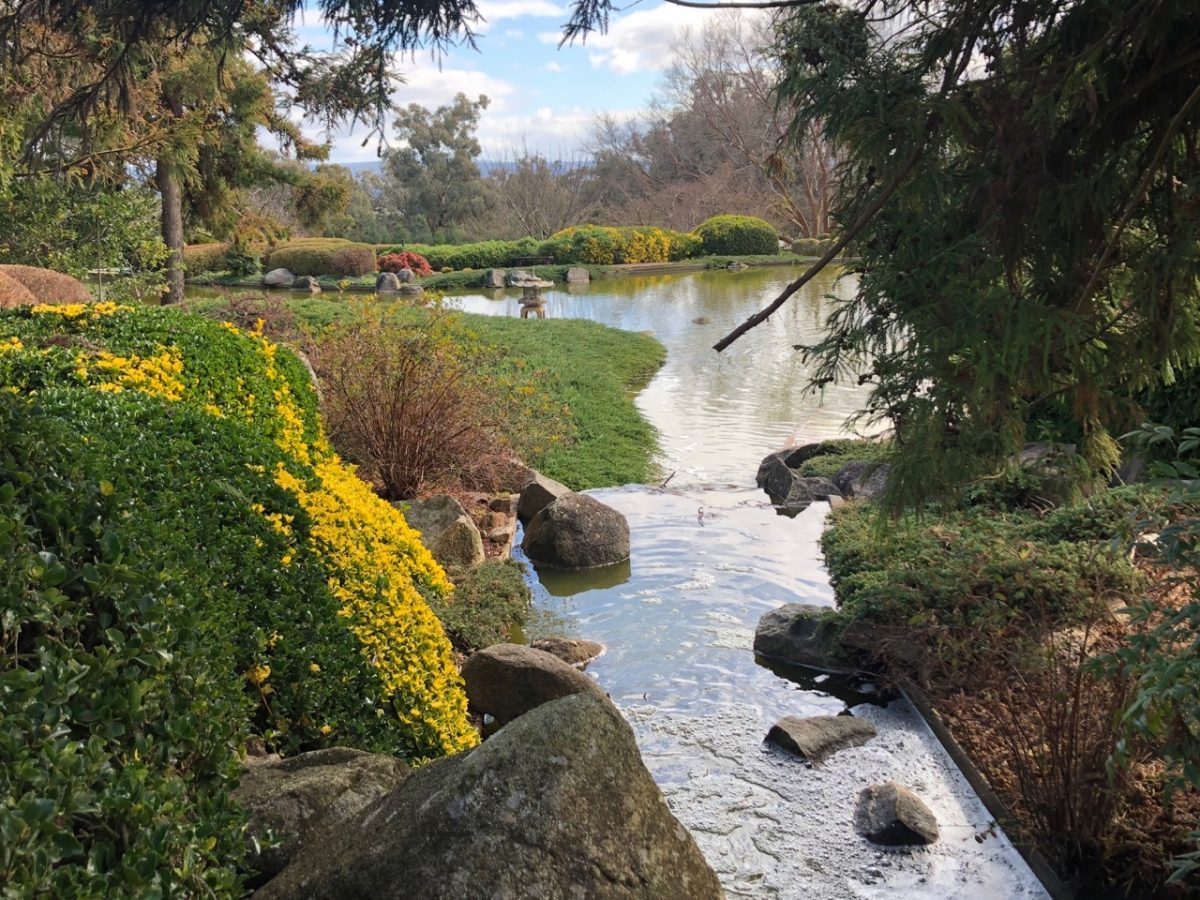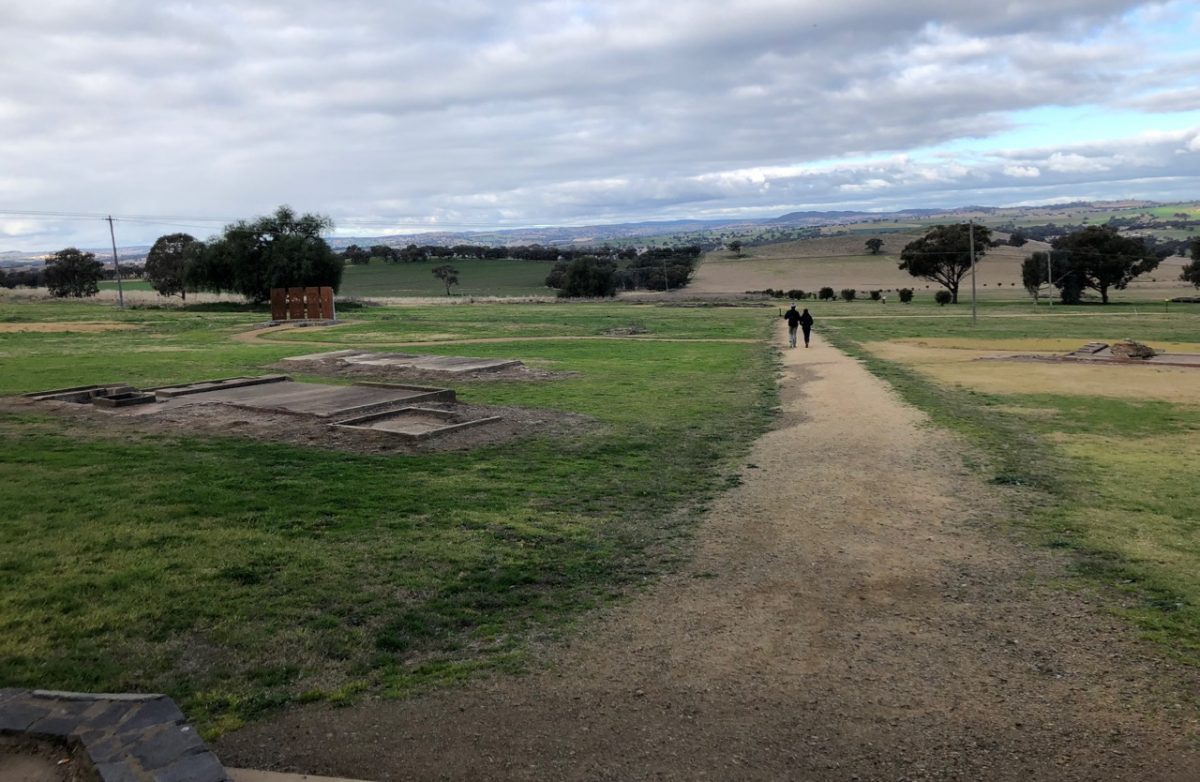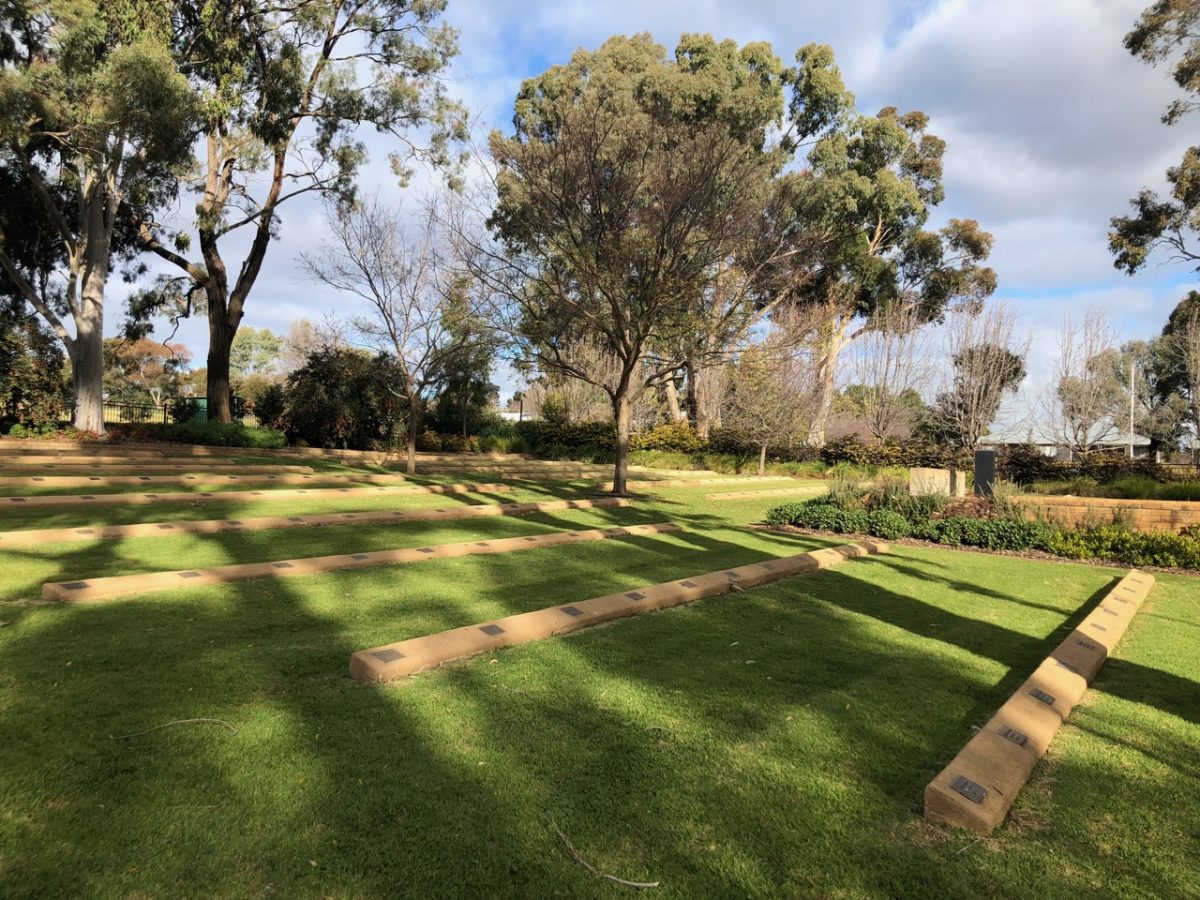
Cowra’s Japanese Garden and Cultural Centre is about to burst into spring colour. Photo: Marg Wade.
Around two-and-a-half hours’ drive from Canberra on the Central Tablelands of NSW lies the rural settlement of Cowra.
Located within the Lachlan Valley, the small town has a population of around 12,000. The name Cowra comes from an Aboriginal word meaning ‘rocks’. Casting an eye over the landscape, you can see why, with its distinct random distribution of large boulders, often found in clumps.
One area where those boulders feature is at the Cowra Japanese Garden and Cultural Centre.
Almost ready to burst forth with spring colour, this 5 ha garden replicates Japan’s landscape and incorporates existing boulders, with two at the top of the hill called Yogoseike and Shugoseike. Beautifully tended lawns and gardens incorporate hedges, waterfalls, streams and two small lakes.
But why a Japanese garden in a small country town like Cowra?
The town’s connection with the Japanese goes back to World War II. Between 1941 and 1947, over 1000 Japanese prisoners of war were housed near Cowra along with Italians, Chinese, Koreans, Indonesians and others.
Known as Number 12 Prisoner of War Camp, the Cowra establishment was one of 28 such camps throughout Australia.
It consisted of four 17-acre compounds, each designed to hold 1,000 people. Around each compound was a separate perimeter fence consisting of three barbed wire fences, nine metres apart. Inside the spaces was concertinaed barbed wire. Sentry guards would patrol the outside perimeter on raised earth walkways called the ‘catwalk’, and a series of large guard towers were located around the compound’s perimeter.
The site is listed on the NSW State Heritage Register and evidence of the camp’s structure can still be seen in Evans Street. Building footings and floor slabs, along with a reconstructed guard tower, signage and descriptive audio, provide a glimpse into the significance of what occurred here.

Evidence of Number 12 Prisoner of War Camp, the site of the Cowra Breakout, can still be seen. Photo: Marg Wade.
Enemy soldiers lived a relatively pleasant existence in the prisoner of war camp, with playing fields and space for vegetable gardens. Prisoners were issued free cigarettes and enjoyed plenty of fresh, locally grown and sourced fruit and vegetables, meat and fish. Italian and Japanese officers were even provided with pillowslips and sheets – a luxury not offered to any rank of Australian soldiers!
In the Japanese military code, there was no concept of surrender and Japanese soldiers would rather die than be captured. The Japanese struggled being prisoners of war and the disgrace, humiliation and self-hatred it created.
By 1944, overcrowding of Japanese prisoners was a problem and it was decided to move some prisoners to another camp in Hay, in western NSW.
This was a defining moment.
The Japanese held emergency meetings, and many decided to regain their honour by attacking the camp perimeter, resulting in their deaths.
The attack was launched at 1:50 am on 5 August 1944. The carnage that ensued saw 231 Japanese killed (three more were to die of wounds later). Four Australians also died.
Several Japanese suicided in the bush after escaping, and some even threw themselves under passing trains. The last remaining Japanese prisoner was recaptured nine days later. Many surviving Japanese prisoners kept their time at Cowra a lifetime secret when they returned to Japan, while others saw their experience as liberating from Japan’s rigid cultural traditions.
Not far from the Cowra Breakout site is the Japanese War Cemetery, bearing the remains of all the Japanese prisoners of war who died in the Cowra Breakout. The cemetery also includes all other Japanese prisoners who died in Australia during World War II.

The Japanese War Cemetery bears the remains of all the Japanese prisoners of war who died in the Cowra Breakout. The cemetery also includes all other Japanese prisoners who died in Australia during World War II. Photo: Marg Wade.
Masuru Moriki was sent to Cowra Prisoner of War Camp after his capture in New Guinea. He reluctantly took part in the breakout on that fateful night, which he described as a “suicide mission”.
Afterwards, he noted that many of the key instigators of the breakout survived and he questioned Japan’s hardline military code which led him on a deep and personal spiritual journey. Mr Moriki acknowledged the respect with which Australia conducted itself during his time at the camp and after the breakout.
“Your country was very generous in its handling of the incident,” he said.
“You buried the dead with care and gave perfect care to the injured … the investigation of the incident was done in fairness … I feel deep gratitude to you. Cowra is a place of my rebirth.”
Cowra held a special place in the heart of Mr Moriki, who revisited many times, including in 1994 for the 50th commemoration of the breakout.
The Japanese Garden and Cultural Centre, the site of the Cowra Prisoner of War Camp and the Japanese War Cemetery, are linked by an avenue of Japanese cherry trees. The focus is on reconciliation and the unique bond between the peoples of Japan and Cowra.
Cowra Visitor Information Centre holds a special display of Number 12 Prisoner of War Camp and an informative hologram presentation of the Cowra Breakout along with detail of other nationalities held in the camp. Cowra has so many secrets to reveal. And with spring just around the corner, the gardens and the Japanese cherry trees will be a true delight.












